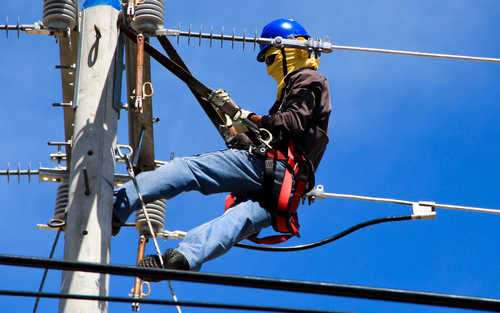How to Prevent Suspension Trauma
Suspension trauma is often overlooked in the workplace. Employers may be focused on protecting their workers from fall-related injuries but leaving them suspended in the air can also be a hazard. The human body isn’t meant to hang upright in the air for long periods of time. Learn about the best fall protection equipment and how to minimize the risk of suspension trauma with these fall protection tips.
The Danger of Suspension Trauma
When a worker falls from a ledge or elevated surface, a properly configured fall protection system (safety harness, lanyard and anchor point) will prevent them from striking the ground or other obstruction. However, if the person is left in an upright position midair with their feet dangling, blood will start to pool in their legs and feet, pulling oxygen away from the heart and lungs. The leg straps on the harness will constrict blood flow, reducing circulation. If left unattended, the person may become dizzy or faint, with progressively worse outcomes as time passes..
Preventing Suspension Trauma
Time is not on your side. If a worker falls, they only have a short window of time to be rescued to prevent suspension trauma. Suspension trauma can be potentially fatal in less than 30 minutes, so it’s best to avoid leaving workers suspended in the air without standing or sitting for any amount of time.
In a crisis, workers should try to move their legs as much as possible to restore proper blood flow. They can try pumping their legs midair or pushing off from a hard surface to keep their muscles active. Sitting midair or hanging in a horizontal position can reduce the effects of suspension trauma, as well.
Choosing a Safety Harness
While having a rescue plan in place is important, employers should do their best to keep their workers safe and comfortable if they find themselves hanging from a safety harness.
To prevent poor circulation and fainting, use a harness with suspension trauma relief straps. The straps run from the neck and shoulders of the worker down to their legs. The person can then use the bottom of the strap to stand up midair, so they can still use their feet and legs. This prevents blood from pooling in the lower half of the body. Blood will flow naturally throughout the body, so the person can maintain their balance until help arrives.
Safety harnesses are part of a system designed to arrest falls, but suspension trauma relief straps provide another layer of protection. They give workers the support they need to stay safe in the air. It’s all about choosing the right safety equipment. Contact the professionals at PK Safety for more information on how to prevent suspension trauma.
Recent Posts
-
Customizing Gas Detectors: Tailoring Solutions to Fit Your Unique Requirements
In today’s diverse industrial landscape, a one-size-fits-all approach to safety simply doesn’t cu …Jul 3rd 2024 -
10 Ways to Prevent Wildfires
You can prevent wildfires by extinguishing flames before you leave the worksite. Avoid practicing …Jul 1st 2024 -
ANSI/ISEA 138 Safety Gloves: Ensuring Hand Protection
The human hand is an anatomical masterpiece and arguably the greatest tool attached to our bodies …Jun 25th 2024





